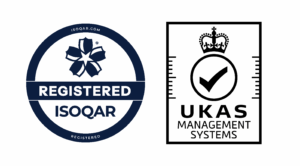Customers vote with their wallets
Customer Experience manifesto
2017 is not quite half way and already this year has many of us concerned about what the future might hold after the UK general election. The volatile political events of 2016 appear to have dominoed into 2017, which has left many UK businesses in limbo – not wanting to make any drastic changes to processes or investing in new technologies – waiting to see the what impact the election results might have on the future of their business.
Another dominating topic in 2017 is AI. Like political ructions, new technology can create fear, uncertainty, and doubt, until we understand it better. But unlike politics, were we can choose who we support, or whether to cast or vote or not, we are parading inescapably into a new generation of digitally enabled customer experiences and there is no turning back. Waiting to invest in new customer engagement technology, could put you well behind the curve competing in a digital future.
Fake News
Some leading organisations are already masters in this new world, already using AI to great effect or actively planning for it. But most organisations still find it difficult to imagine how AI with its hype and science fiction drama can bridge the gaps between a customer’s diverse interaction points to help improve their journey and experience with services and answers they need.
If you’re reading this, there’s a good chance you understand that consistently satisfying customer service is increasingly important as customer expectations are adapting and growing just as rapidly as the channels and technology consumers are now empowered to engage with.
Being open to new paths of communication, such as Virtual Agent technology, can up the personalisation and customer engagement stakes. Unlike the uncertain outcome of the UK general election and its repercussions, Virtual Agents, when deployed correctly, with a set of specific goals, can generate leads, increase sales, and grow a business in a big way, and this is only the beginning. However, just because Virtual Agents are part of the hottest topic of 2017, this does not necessarily mean it will be the right fit for everyone.
Polls
Self-service has become the long-term solution to meeting customer expectations. In a global report, ‘The Self-service Economy’, 70% of consumers expect a self-service option for handling commercial questions and complaints. And millennials especially expect companies to keep improving their levels of service, expecting everything to be just a click away – their social relationships, their retail relationships, even their banking and insurance relationships.
This isn’t a manifesto to try to convince you to invest in Virtual Agent technology, but rather to highlight how it can align with wider business objectives.
Standing still is going backwards
Synthetix are pioneers of Virtual Agent technology. However, all Virtual Agents are not created equal.
A Virtual Agent should not to be confused with a chatbot. A chatbot is mainly focussed on a single purpose, like providing simple answers in a very linear, single dimensional support. Less scalable and robust than a Virtual Agent, a chatbot might not a great option over the long term, as frequently they lack reliability, analytics, and learning.
The Chief of Facebook Messenger, David Marcus says that 34,000 bots have been created in the name of customer experience, since its launch. However, he acknowledges that many early offerings of chatbots are ‘really bad’.
So, what’s the deal with Virtual Agents?
A semblance of personal service, Natural Language Processing (NLP) – a component of artificial intelligence – a Virtual Agent can drive personalised customer experiences and increase engagement. Combined with a graphical representation, this is a powerful additional contact channel (not a replacement for human interaction). Virtual Agents can raise the online customer service effort bar, offering customers who wish to self-serve answers, in an engaging, appropriate, and conversational automated interaction.
The business case for the Virtual Agent is different to that of a humble, self-service chat-bot. A personalised, goal oriented answer engine, designed specifically, to deliver customer value in both sales and service engagements.
How can a Virtual Agent align with wider business objectives?
KPIs within the customer care usually comprise of reducing complaints, increasing the speed of response, and improving first call resolution. Virtual Agents can help achieve these objectives and more.
Just think about the tasks you could have Virtual Agents do. They can exercise predictive skills, knowing the intent of a question, and therefore predict the next. They could answer multiple questions, without getting annoyed, tired, and even with a sprinkle of humour. They can recognise the basic intent of the question and emulate human intelligence, making them capable of taking on a wide variety of tasks including to ‘decide’ to escalate or to fulfil a request.
Virtual Agents, if deployed in the right manner, can reduce support costs, encourage self-service, increase customer loyalty, and serve as a branding/marketing tool.
Conclusion
There’s a lot of shouting from the rooftops about how AI is the future and a lot of businesses are getting caught up in the politics – AI is killing apps, will take over jobs, change the world.
If Synthetix were in politics, we are convinced that our customers would vote for our seat in Westminster. However, we are fanatical about not just our clients, but we are advocates for the creation of exceptional customer service. In fact, with all this hype, we decided to collaborate with a trusted publication to clarify the subject of Virtual Agents in a very palatable, concise style, without the politics and drama.
Request your free copy Virtual Agents for Dummies of Virtual Agents for Dummies.

